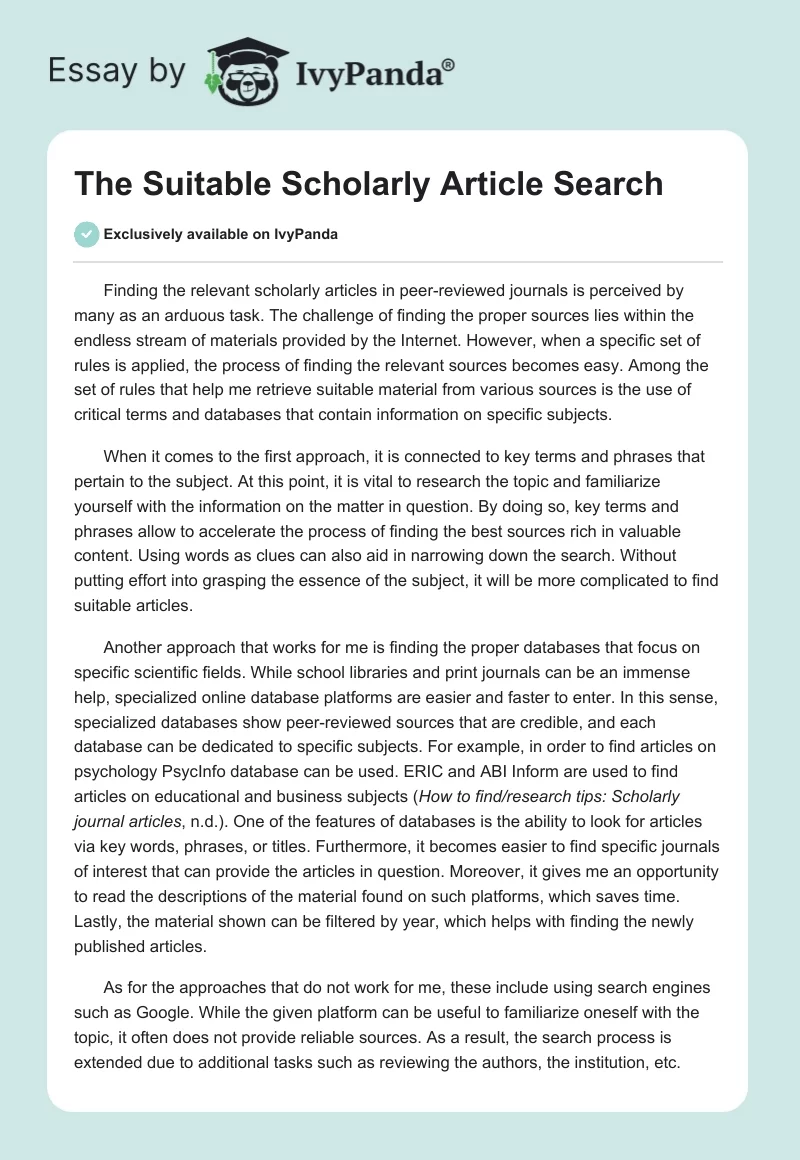Finding the relevant scholarly articles in peer-reviewed journals is perceived by many as an arduous task. The challenge of finding the proper sources lies within the endless stream of materials provided by the Internet. However, when a specific set of rules is applied, the process of finding the relevant sources becomes easy. Among the set of rules that help me retrieve suitable material from various sources is the use of critical terms and databases that contain information on specific subjects.
When it comes to the first approach, it is connected to key terms and phrases that pertain to the subject. At this point, it is vital to research the topic and familiarize yourself with the information on the matter in question. By doing so, key terms and phrases allow to accelerate the process of finding the best sources rich in valuable content. Using words as clues can also aid in narrowing down the search. Without putting effort into grasping the essence of the subject, it will be more complicated to find suitable articles.
Another approach that works for me is finding the proper databases that focus on specific scientific fields. While school libraries and print journals can be an immense help, specialized online database platforms are easier and faster to enter. In this sense, specialized databases show peer-reviewed sources that are credible, and each database can be dedicated to specific subjects. For example, in order to find articles on psychology PsycInfo database can be used. ERIC and ABI Inform are used to find articles on educational and business subjects (How to find/research tips: Scholarly journal articles, n.d.). One of the features of databases is the ability to look for articles via key words, phrases, or titles. Furthermore, it becomes easier to find specific journals of interest that can provide the articles in question. Moreover, it gives me an opportunity to read the descriptions of the material found on such platforms, which saves time. Lastly, the material shown can be filtered by year, which helps with finding the newly published articles.
As for the approaches that do not work for me, these include using search engines such as Google. While the given platform can be useful to familiarize oneself with the topic, it often does not provide reliable sources. As a result, the search process is extended due to additional tasks such as reviewing the authors, the institution, etc. Additionally, the majority of academic peer-reviewed articles cannot be found online via free access. Consequently, in order to provide high-quality work, it is vital for me not to waste time on using Google to find verified articles since, even if it is an option, it will be time-consuming.
Thus, the process that must be followed is limited to several steps that, if used correctly, can help one find credible sources. At this point, the first step to finding the relevant scholarly articles in peer-reviewed journals is through familiarizing myself with the topic in question. By doing so, it can be easier to find the article by using key terms and phrases, which narrows down the search. Another helpful step that facilitates finding the verified material is using databases. While search engines such as Google can provide endless information, specialized databases are aimed to provide the relevant sources of any time and popularity.
Reference
How to find/research tips: Scholarly journal articles. (n.d.). LibGuides. Web.


